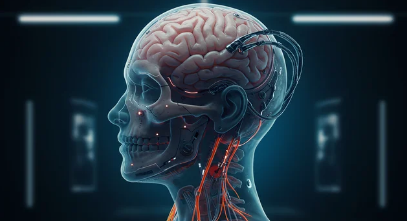At first glance, the world of magnetic resonance imaging (MRI) in hospitals and the pursuit of nuclear fusion energy in physics labs may seem to belong to two completely separate realms. One helps doctors diagnose patients, while the other attempts to replicate the energy of stars on Earth. Yet, beneath these differences lies a shared magnetic language—a reliance on magnetic fields, radiofrequency (RF) signals, and advanced imaging techniques that make the invisible visible.
By exploring this common ground, we can uncover how MRI and fusion science speak the same technical dialect, and how innovations in one field may accelerate progress in the other.
The Magnetic Foundation of Both Fields
MRI: Harnessing Magnetic Resonance
MRI technology uses strong magnets and RF waves to align and disturb hydrogen atoms in the body. When these atoms return to equilibrium, they emit signals that can be reconstructed into highly detailed images of organs, tissues, and even metabolic activity.
- Magnetic fields: Shape the resonance environment.
- Radiofrequency pulses: Disturb and measure atomic spins.
- Image reconstruction: Transforms signals into 2D and 3D pictures.
MRI provides a safe, non-invasive way to “see” inside the human body with remarkable clarity.
Fusion: Taming Plasma with Magnetic Confinement
Fusion reactors, such as tokamaks and stellarators, depend on equally powerful magnetic fields. Instead of imaging tissues, these fields confine plasma—ionized gas at millions of degrees—preventing it from touching reactor walls.
- Magnetic fields: Trap and stabilize plasma.
- RF waves: Heat plasma particles and probe density.
- Diagnostics: Measure plasma behavior without direct contact.
Both domains, in essence, manipulate charged particles through magnetic precision.
A Shared Language of Signals
MRI and fusion diagnostics face the same challenge: separating meaningful signals from overwhelming noise.
- In MRI, noise can come from patient movement, hardware interference, or environmental vibrations.
- In fusion experiments, plasma turbulence and electromagnetic interference obscure vital measurements.
Both rely on Fourier transforms, advanced filtering, and reconstruction algorithms to interpret data. This shared mathematical “grammar” makes collaboration between fields not only possible but promising.
Lessons Fusion Can Learn from MRI
1. The Power of Non-Invasive Imaging
MRI revolutionized medicine by offering clear images without surgery. Similarly, fusion research benefits from diagnostics that do not disturb plasma. Techniques inspired by MRI—like magnetic resonance tomography and spectroscopy—allow scientists to analyze plasma structure and behavior without interfering with experiments.
2. Calibration as a Daily Discipline
MRI technicians meticulously calibrate magnets and RF sequences before every scan. Fusion scientists can adopt the same rigor to ensure magnetic confinement systems and diagnostic tools remain accurate across countless experiments.
3. Signal-to-Noise Optimization
MRI experts excel at extracting clarity from imperfect data. Fusion experiments could gain by applying these techniques to detect plasma instabilities earlier and with higher resolution.
4. Workflow Efficiency
Hospitals rely on MRI technicians to manage patient flow and machine uptime efficiently. Fusion facilities, where each experiment is enormously costly, could apply similar workflow models to maximize reactor operation time and reduce diagnostic bottlenecks.
Cross-Pollination of Tools and Methods
Fusion diagnostics already borrow tools from MRI research:
- Magnetic resonance spectroscopy (MRS): Used to measure plasma particle energies.
- Tomographic imaging: Similar to MRI slices, this reconstructs plasma density maps.
- RF heating and probing: Adapted from resonance principles to energize plasma particles.
Conversely, advances in fusion—such as handling extreme magnetic fields and data processing at massive scales—could inspire improvements in next-generation MRI machines.
Challenges in Translation
While the magnetic language is shared, the contexts differ drastically:
- Temperature ranges: MRI works at body temperature; fusion operates at millions of degrees.
- Field strength: Fusion magnets dwarf medical MRI fields in intensity.
- Data size: Fusion diagnostics produce terabytes per experiment, far more than a clinical scan.
Still, the principles of precision, calibration, and non-invasive measurement bridge the gap between medicine and energy research.
The Future of Shared Magnetic Knowledge
The synergy between MRI and fusion research offers exciting possibilities:
- Collaborative research programs: Physicists and medical imaging experts pooling expertise in magnet design and signal processing.
- Improved diagnostics: Fusion-inspired algorithms enhancing MRI clarity, while MRI’s patient-safe techniques refine plasma measurements.
- Training crossover: MRI technicians contributing to fusion diagnostics, and fusion researchers informing MRI hardware design.
As both fields evolve, they continue speaking the same magnetic language—one that could improve healthcare outcomes and bring humanity closer to sustainable fusion power.
Conclusion
MRI and fusion may seem like distant cousins, yet they share a magnetic DNA that binds them together. Both rely on the art of shaping magnetic fields, reading faint signals, and reconstructing hidden realities. By recognizing this shared language, researchers can unlock breakthroughs in energy and medicine alike.
In the end, whether it’s diagnosing disease or powering the future, magnetism is the common tongue that connects human health and human progress.
Also Read :
